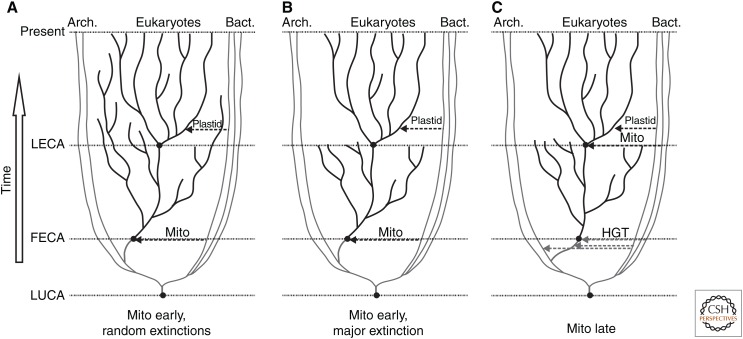Figure 2.
Three alternative branching and extinction pathways leading from the last universal common ancestor (LUCA) to the first eukaryotic common ancestor (FECA), the last eukaryotic common ancestor (LECA), and present eukaryotic clades are diagrammed to explore mechanisms that selected for a LECA with 9+2 cilia. (A) Mitochondrial (Mito) endosymbiosis early, together with formation of a nucleus, transforms an archaeum into the FECA. Present diversity results from random branching and extinction, and alternate ciliary architectures are lost by chance. (B) Mitochondria are acquired early. Present clades result from rapid divergence from the LECA following a major extinction event, which chanced to preserve an organism with 9+2 cilia. (C) Horizontal gene transfer (HGT) between eubacteria and archaea generates an amitochondriate FECA. Much later, endosymbiosis of an α-proteobacterium creates the LECA, which rapidly diverges into present clades, whereas clades that lack mitochondria become extinct. The host for endosymbiosis, by chance, has 9+2 cilia. Arch., Archaea; Bact., bacteria.

